Every once in a while a new product comes along that seems to break all the rules. We think we know how the world works, then something comes along that makes us rethink everything. It seems odd to be bringing that up here in the audio space as it is a well-travelled path and things are pretty formulaic.
Ask any audiophile which is better, an open back headphone or a closed back and you’ll hear the same response which goes something like this, “Unless you have to have isolation, you want an open back as the soundstage is so much larger and more realistic. Closed back headphones are good for airlines and bedrooms but not much else.”
Much the same way, many will argue that electrostatic headphones are better than planar magnetic models, which in turn are better than dynamic driver based models. There are a few exceptions to this, but even Sennheiser, which makes some of the top dynamic driver models in the world, went to an electrostat when engineering the Orpheus. HiFiMan, who makes world class planar magnetic headphones went with an electrostat when they built their Shangri-La.
Audeze? Same thing with the brand new Audeze CRBN headphones that we just covered a few weeks ago.
The argument will always be that an electrostatic driver is capable of moving faster than either a planar or dynamic driver and will always have that advantage.
Kennerton Rognir?
Schiit Audio developed a headphone? Nope.
What’s fascinating about the headphone space is that small teams of engineers have proven to be extremely capable when it comes to developing driver solutions that most consumers wouldn’t even think about.
Kennerton decided to upset the apple cart and go and ruin everything.

They completely redesigned the planar magnetic driver using a carbon fiber frame for increased rigidity and lower mass, created a patented semi-circular magnet system that increases the magnetic field strength and thus the speed of the diaphragm in response to it, and a diaphragm film that is less than half the thickness of a human hair so the moving mass is as low as possible while retaining good strength and longevity.
The Kennerton engineering team then teamed up with an aerospace manufacturer to produce these new parts with extremely high tolerance levels.
Audeze have proven to be particularly adept at engineering very advanced new driver technology that is also being used in the world of medicine so it’s very exciting as a member of the Head-Fi community to see this level of innovation.
What Our Brain Hears
At the same time, another group of engineers began to tackle the reflections that normally limit the soundstage of closed back headphones. Any reflected sound is heard just slightly after the original sound and that delay tells the brain that there is a barrier present.
You can test this by going into different sized rooms blindfolded, and once guided to the center of the room, call out your name.
Your brain interprets the sounds around you and you have an idea of room size and sometimes even shape. While the science behind this is several lifetimes worth of study, the simple test above can illustrate the brains amazing ability to determine distances from auditory information.
Knowing that, consider that a closed back headphone presents that barrier roughly one inch from the ear. This is the reason closed back headphones generally reproduce a smaller soundstage.
In order to make the soundstage sound larger, we have 3 options that we can try.
The first is to move the barrier – this is what open back models do.
By not having a back on the headphone, the barrier becomes the closest object to the headphone which is usually measured in feet instead of inches and the reflections that make it back to the ear are massively reduced.
The second option is find a way to delay those reflected waves. The brain uses the timing from the driver to the first reflection point to determine size so a delay in the arrival of the reflected wave will be interpreted as an object being further away. Baffles, foam, and other fillers are designed to delay reflected waves.
The third option is to eliminate the reflected waves entirely. This is similar to stealth technology used in aircraft.
If we can redirect reflected waves in directions other than toward the source, then the brain never receives that information to interpret. If we can absorb the energy and deaden the wave so the reflection does not occur this is even better.
All materials either transmit, absorb, or reflect sound so carefully selecting materials is a big part of the puzzle but it often is not enough.
Kennerton has designed a honeycomb of baffles that deflect reflected sounds away from the ear and uses materials that absorb as much of those reflected waves as possible.
All of this design work comes together in the Kennerton Rognir headphone. This is Kennerton’s new closed back flagship model and it is rewriting the rules as we know them.
Disclaimer
I received the Kennerton Rognir as part of a review tour. I was allowed to keep it for 14 days before sending it on to another reviewer. A big thanks to Andy and Kennerton for entrusting me with their product.
It should be noted that the tour kit differs from the retail version from the perspective that all pad and cable options available are being shipped with the tour kit to give reviewers a chance to try out all the optional gear.
When ordering your own Rognir, all the options are customizable at time of purchase and additional pads, and cables can be purchased separately if needs change. I have no financial interest in Kennerton or any of its distributors.
The Great Unboxing of 2021
The Rognir forgoes a lot of the fancy packaging of other high-end models with a more utilitarian box but came well packed for travel and everything has its own space, so no scratches, dings, marks, or other blemishes occur during the process.
The supplied kit with the review unit included the standard package which consists of the headphones, eco-leather case, standard cable (6.3mm TRS), premium 2-meter Litz cable (dual XLR mini to 4-pin XLR), custom 4-pin XLR to 6.3mm adapter and the standard pads (ECL-R-01 lambskin).

In addition to the standard kit, the tour package adds the 1.5-meter lightweight custom Litz cable (4.4mm TRRS) and three additional styles of pads (R-02 Lambskin, ECL-02 Leather, and R-03 perforated Lambskin), all of which are angled memory foam style pads.
The one item that is missing is a 3.5mm terminated cable which seems odd as it is now the most popular terminator in general circulation. Kennerton doesn’t currently have a 3.5mm terminated cable in stock with only a 6.3mm to 3.5mm adapter in the catalog.
I conducted some listening using a 3.5mm terminated Black Dragon (5ft) cable I had on hand from a previous audition of a ZMF headphone.
The case is unique to Kennerton and offers a padded pocket for the headphones, a separate net pocket for the cable and an optional carry strap for shoulder carry if desired. The only trick they missed was putting a mesh pocket on the outside of the case for a DAP.
Build Quality
Having seen pictures of the Rognir and knowing the particulars, I expected a certain degree of heft when removing them from the packaging.
Picking them up was the first hint that any preconceived notions I had were about to be wiped out. The Rognir does not feel heavy in the hand or on your head and was extremely comfortable when worn.
I expected something more like the HiFiMan Ananda in both weight and comfort level but was quite happily wrong on both counts.
Now that you know that the Rognir are not very heavy, you’re probably thinking that they are smaller than the images depict. The opposite happens to be true in this case with the Rognir proving to be similar in size to the Fostex 610, Beyerdynamic T1, and HiFiMan HE6 headphones.

The ear cups are available in several different woods including Bog Oak, Coffee Beech, Purpleheart, Bubinga, Walnut, and Teak. It is possible to special order the Rognir in the Karelian Birch that was used for the review tour pair. I was very impressed with the Karelian Birch and would venture to say that the Rognir with this finish is one of the most beautiful headphones that I’ve ever seen.
The other thing to know is that Kennerton sources raw wood and manages the curing process internally so each pair has been through rigorous testing at multiple stages along the drying, rough cutting, shaping, and finishing processes to ensure the quality and durability of each cup.
What Kennerton sells as second quality would pass as premier quality for a lot of makers; they are that meticulous.
Shaping the cups is a multi-stage process with the finished product having 3 graduations from pads to faceplates with a vent immediately above the rear gimbal attachment point on the side of the cup and the mini-XLR connector on the front lower side.

The XLR connectors give the cable about a 15º forward tilt. The pads are attached with a flap in slot arrangement similar to Beyerdynamic models (more on those in a bit).
Needless to say, the Kennerton Rognir are industrial design at its best; the Meze Audio Empyrean (which are about to be replaced by a new flagship model) are definitely in the same league.
Engineering
The heart of a lot of the Kennerton headphones is a planar magnetic driver designed by Kennerton and built in the same factory that produces parts for Russian military fighter aircraft.
Kennerton started out with a typical planar driver and analyzed all the problems with that driver and set about fixing them. The result is a patented driver that minimizes the internal structure to reduce reflection and remove unwanted resonances.
Materials include a carbon fiber frame and support, 10 semi-circular neodymium bar magnets, and an extremely low mass 20µm polyimide diaphragm. By contrast, a fine human hair has an average thickness of 50µm.
The driver in this 80mm planar is remarkably thin. The nominal impedance is listed as 42Ω with a sensitivity of 100 dB/mW at 1kHz (±3dB). It’s not something you can drive with your iPhone.
The Rognir does need some power to drive well but had no trouble working with sources like the Cayin N3 Pro and Kann Alpha using the 4.4mm balanced cable.
The Burson Funk had more than enough power to use with the Rognir with average listening levels only requiring between 25% and 30% on the volume control. I also found the RME ADI-2 had good synergy with the Rognir.
Portable sources do get pushed hard so battery life may be less with some other models but listening is still very possible with good headroom even when using mid-fi portable gear.
Ear Pad in Your Pocket
The pads on the Rognir deserve some discussion as those shipped with the retail kit are shallow and those with larger ears may well get the sensation that the Rognir is as much an on-ear as an over-ear when using the stock pads.

Kennerton shipped 4 sets of pads with the tour sample; stock lambskin memory foam, lambskin memory foam angled, lambskin memory foam perforated angled, and leather memory foam angled pads.
Some of these optional pads are slightly thicker and do remove the on-ear feel, but all also have an impact on the sound so one will likely want to audition pads before swapping. Luckily, pads designed for the Beyer T1/T5, and its siblings also fit as did some of the ZMF pads I had on hand so there are a lot of after-market options if the Kennerton branded ones are not a good match for the listener.
I conducted most of my listening while using the stock pads just to keep the playing field level but found that when listening for pleasure, a Dekoni-made Choice Suede pad from my T1 was better. The suede does reduce isolation some but had less impact on the signature than some others and gave a great blend of comfort and sound.
The Sound…Finally
The first thing you should know is that the Kennerton Rognir does it best to convince you that you are listening to an open-back electrostatic headphone; it’s almost shocking how much it succeeds in that regard.
The best closed-back headphones (regardless of driver technology) could never approach the clarity and openness of these headphones which is really impressive and I’m taking about $5,000+ products.
Slappin Da Bass
I’m not sure if Geddy or Neil would approve but the low-end response is quite good with ample weight and very good texture. The Rognir is not for bassheads, however, and those looking for a headphone that can deliver skull crushing low end response might be disappointed. The Rognir is extremely impressive if you care about texture, definition, and overall tonality.
The mid-bass has equally impressive control and what starts to become more evident is that the tonality and timbre are rather exceptional. Timpani sounds as realistic as I’ve heard on any headphone and toms and kick drums share in that as well.
The combination of control and tone makes the Rognir a pleasure to listen too for bass strings and wind instruments as well as the textural elements that are so often lost or glossed over on other headphones are on full display here. These come as close to a perfect score for bass as I have ever awarded and set the bar for what bass can and should be in a monitoring headphone.

The midrange performance of the Kennerton Rognir is even more interesting. The level of control exerted over the bass continues as you move into the lower mids meaning there is no bleed to be found and a very clean transition.
The midrange is arguably the strongest feature of the Rognir and while the FR chart doesn’t particularly show it, the midrange stands out when listening. Male vocals have good tonality with enough weight to sound natural.
Cello has great nuance and texture to the sound and guitars have a satisfying sharp edged growl when listening to rock. String tonality which is so hard to get spot on is also extremely good and while maybe a shade behind the Audeze LCD-4 in absolute detail — is more natural and not quite as strained as the LCD.
The Rognir has excellent transparency and seems to deliver all of the detail effortlessly. Female vocals are very mildly forward which helps them cut through the mix, but don’t seem disjointed from the lower voices and as such duets sound better than usual as the two vocals are close enough in space to sound similar to a live performance. Once again, the Rognir delivers a world-class level of performance.
Treble or Trouble?
Having already exceeded my expectations in the bass and midrange, I was slightly nervous about the treble. There’s no such thing as a perfect headphone and the Rognir proves to be human after all.
The lower treble is not elevated but maintains the superb detail and clarity found in the lower ranges. Most of the emphasis is in the 4k-7kHz range and it does make the Rognir sound a touch brighter than necessary at times.

The nice thing about this tuning is it avoids sibilance and stridency that sometimes come with a lower treble push and still provides plenty of air and top end to keep things from feeling closed in.
Snare rattle is nice and sharp, and cymbals have good energy as well with an occasional hint of metallic sound that may well be the fault of the recording rather than headphone.
I want to believe that the Rognir is near perfect, but I did find long listening sessions somewhat fatiguing if using a source that was at all bright paired with it.
For the Rognir to deliver its best, it needs a source with a little warmth and a treble that isn’t elevated as a cooler/brighter source can make the Rognir a little too bright for me.
All the World’s Indeed a Stage
I mentioned earlier that the Rognir was a closed back planar doing its best to make the listener believe it was an open back electrostat and the soundstage is the place that is most evident.
The Rognir has amazingly good stage dimensions with good depth and nearly equal width and plenty of height thrown into the mix. It is about as holographic a stage as one could ask for and places the listener in a 3D space where they are the center of the musical world and sounds can seemingly come in from all angles and directions from various distances away.

Seating the orchestra is very staright forward with no gaps or overlaps. Echoes are easily detected and one can pretty clearly define the direction and distance of the wall from the stage when listening to Cowboy Junkies’ Trinity Sessions.
Layering is extremely good and both instrument separation and stereo separation are what you would expect from a state-of-the-art headphone albeit you’d likely expect it from an open-backed one.
Imaging is equally impressive with very tight definition and placement and easy tracking of motion around the stage.
Likewise, try as I might, I simply don’t own a track fast enough and complex enough to cause the Rognir to trip up. That’s rather remarkable.
Synergy or Very Demanding?
I tried the Kennerton Rognir with a bit of everything just to see what it liked and what it didn’t. In the desktop arena, I used an Xduoo TA-30 (Mullard pre-amp tubes), Topping D30 Pro / A30 Pro pairing, Burson Swing/Funk combination, Auris Euterpe, and the RME ADI-2 Pro FS R BE.

For portable testing, I used the AK Kann Alpha, Dethonray DTR1, Sony WM1A, Earmen TR-amp, and Cayin N3 Pro.
Top pairing in the desktop category goes to the Auris Euterpe. With the right tubes, this is a phenomenal pairing. The TA-30 was also quite good, but its brute power is simply not needed.
Middle of the pack was the Topping pairing, and the Burson combination (with the V6 Vivid Op-amps throughout). These both had slightly less warmth than the tubes but still enough to really make the most of the Rognir. For detail retrieval, the Burson pairing was likely the best of the lot.
Nu? Is it Worth the Shekels?
I expected good things when I was told I would get a chance to try the Rognir, but I didn’t expect what I received. I’ve owned several large planar headphones; both open and closed back and thought I had a pretty good idea of what was possible. I was very wrong.
Everything you think you know about planar magnetic headphones, especially closed back models – has been flipped on its head by the Kennerton Rognir. It could easily be mistaken for an electrostatic headphone; the best ones like the Stax 007 and that’s very high praise.
In some ways, the Rognir is like the wonderful Meze Audio Empyrean; they both offer reference quality resolution and transparency and almost effortless delivery.
The Rognir is a very special headphone that is likely to be polarizing. There will be comparisons to the best from Audeze, HiFiMan, Dan Clark Audio, and Meze Audio. Every one of those manufacturers has delivered headphones that would make “Best” lists within the Head-Fi community.
The Kennerton Rognir might be one of the most surprising headphones I’ve ever heard for the simple reason that it sounds so much more engaging than almost all of the headphones that many would consider the best headphones in the world. If you are in the market for a truly remarkable sonic experience – the Rognir belongs in the top echelon of headphones ever created.
- For more information: kennerton.org/category/headphones/rognir/
- Where to buy: $3,933 at Audio46
Related reading: Focal Stellia Closed-Back Headphones Review





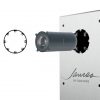










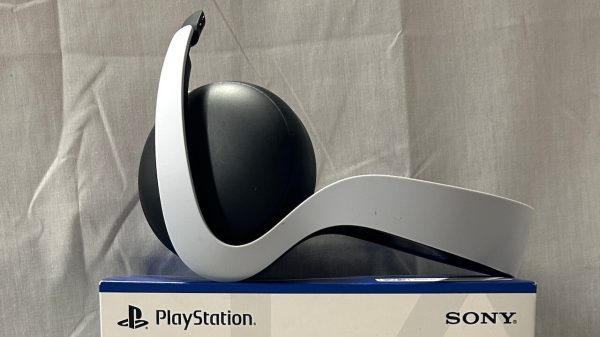


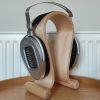




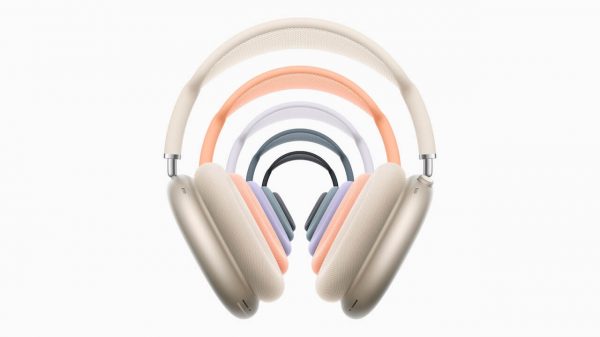



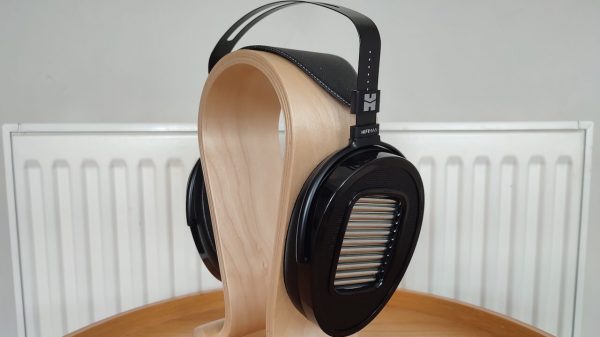











szore
October 22, 2021 at 9:35 pm
Great review!
I’m next on the tour, delivery Monday…Cannot waiiiiittttt…..
Ian White
October 23, 2021 at 12:26 pm
Lucky.
Ian White
Russell
October 25, 2021 at 10:47 pm
HI,
I’m intrigued by this headphone, though I do wish that it came with an additional cable with a 3.5mm termination. Since you mentioned that you used the Black Dragon cable for some listening, did you notice any significant differences between it and the stock cables? If so, what were they?
Thank you!
Wiljen
October 26, 2021 at 1:04 am
I found the sound very similar between all the cables and mentioned the black dragon as I felt it was the closest to the factory cables of the aftermarket models I had on-hand. I did try a couple others and ruled them out either for build reasons or because I felt they were not a great match. I think you’ll find the Black Dragon to be a fitting complement to a great headphone.
dave
November 19, 2021 at 12:32 pm
Just got mine, now I’m waiting for my Woo WA6-SE to plug em into.
Ian White
November 19, 2021 at 2:22 pm
Dave,
Would be interested in knowing your thoughts.
Ian White